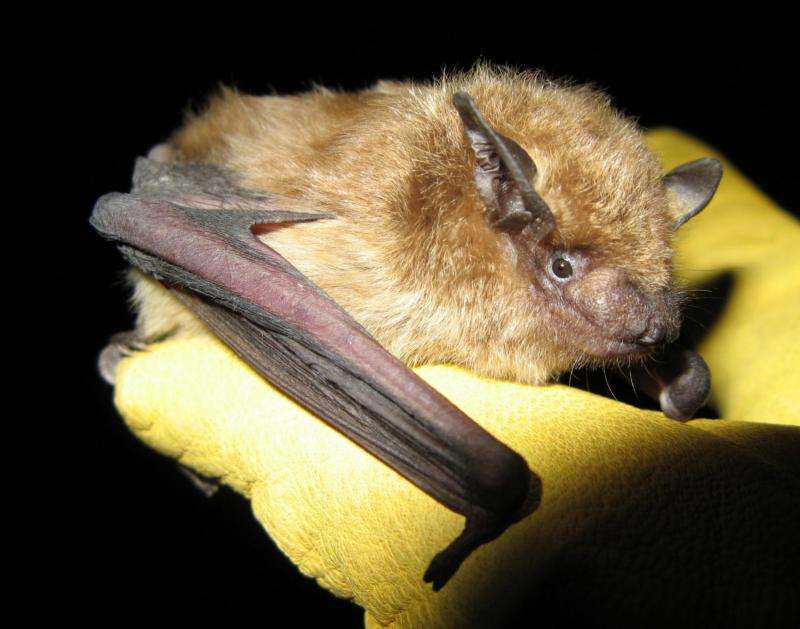Explaining species differences in bat mortality from white-nose syndrome

Bat body type, and the environmental conditions bats use in their hibernation sites, may explain species differences in bat mortality from white-nose syndrome, according to a Colorado State University-led study published online Jan. 29 in Science Advances.
White-nose syndrome is a fungal disease of hibernating bats that has caused dramatic bat population declines in North America since 2007 – yet certain bats survive infection.
The collaborative research was centered at Colorado State University as part of the postdoctoral fellowship of David Hayman, now at New Zealand's Massey University. While at CSU, Hayman was mentored by Colleen Webb, professor of biology in the College of Natural Sciences, as well as by Paul Cryan, a research biologist at the USGS Fort Collins Science Center, and Juliet Pulliam of the University of Florida.
Mathematical model for size, metabolism
The researchers used a mathematical model integrating the effects of bat body size and metabolism with growth of the fungus across a range of winter temperature and humidity conditions. They then showed why some bats survive infection while others do not.
The model found larger bats that hibernate in cold and dry sites might be the most likely to survive infection by the fungus. This finding fits with previous studies, which found high humidity and temperature in hibernation sites to be associated with bat death.
The researchers also mapped their model results across North America and Europe to show differences in species mortality at continental scales – with European species surviving and North American species faring much worse.
Hayman, now an infectious disease specialist and senior lecturer at Massey University's Institute of Veterinary, Animal and Biomedical Sciences, said this may have to do with behavioral adaptations as well as environmental factors.
"Our study shows how interactions between fungal growth and the needs of hibernating bats can cause death during winter in warmer and more humid caves and mines," he said. "We speculate that the North American species of bats most affected by white-nose syndrome are confined to using wet hibernation sites where the fungus can thrive on their bodies. European bats may have also adapted physical and behavioral traits to survive hibernation in the presence of the fungus."
Bats' role in various ecosystems
CSU's Webb says the findings are of interest because bats play important ecological roles in most of our planet's ecosystems.
"Because bats serve as the main predators of night-flying insects, such as moths and beetles, insect-eating bats are estimated to save farmers billions of dollars each year by providing natural pest suppression," Webb said. "The economic and ecological effects of bat populations declining in the wake of white-nose syndrome remain unknown."
The practical implications of this research could include predicting species and populations most likely to decline due to white-nose syndrome, finding places where bats might survive the disease, and prioritizing protection of sites with the right conditions for survival.
Co-author Cryan says "keeping a close eye on the survivors and the places they hang out may be our best chance of finding a good way to help."
Modeling disease ecology
Hayman completed the work as part of a David H. Smith Conservation Research Fellowship. Disease ecology is a major area of focus for Webb's lab. She takes a modeling approach to understanding how highly virulent diseases, particularly zoonotic diseases that can affect humans, persist in wildlife reservoirs.
"White nose syndrome is impacting only the bats, but we have done a lot of work with bat diseases that also affect humans," Webb said. "Bats have been hypothesized to be "special" hosts, in that they seem to host more highly dangerous, emerging diseases, such as SARS and Ebola."
More information: D. T. S. Hayman et al. Environment, host, and fungal traits predict continental-scale white-nose syndrome in bats, Science Advances (2016). DOI: 10.1126/sciadv.1500831
Journal information: Science Advances
Provided by Colorado State University



















